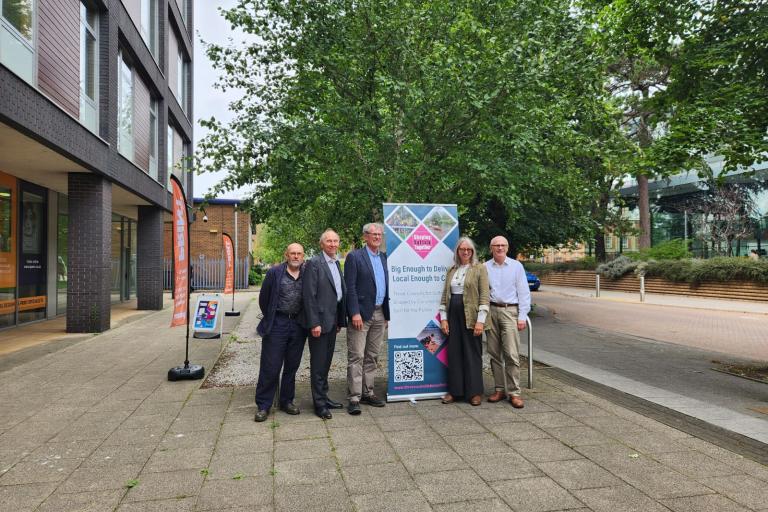
The five district and borough councils of Suffolk, Babergh, East Suffolk, Ipswich, Mid Suffolk, and West Suffolk, have today (7 August) launched their joint Three Councils for Suffolk proposal, a locally led plan to reshape local government and deliver stronger, more responsive services to communities across the county.
This proposal offers an alternative to Suffolk County Council’s vision of a single “mega council,” instead championing a structure that is big enough to deliver, local enough to care.
Suffolk is a county of contrasts, from coastal towns and rural villages to vibrant urban centres. The Three Councils For Suffolk proposal recognises this diversity and is built on three strong foundations: local leadership, tailored services, and financial sustainability.
The preferred option of three councils would each serve distinct regions anchored by Suffolk’s largest towns, Bury St Edmunds, Ipswich and Lowestoft. This meets the government guidance that the new council areas have a “clear rationale”, they are “sensible economic areas” and have “sensible geographies”.
The Three Unitary Councils plan responds directly to what people across Suffolk have said they want: councils that are local, greater accountability with local councillor leadership, and provide services that understand and reflect the needs of Suffolk’s diverse communities.
It also delivers value for money. Independent analysis by KPMG shows the model could unlock £34 million in annual savings, while allowing reinvestment of £20 million every year back into vital services such as social care, highways, and housing.
This model also strengthens the voice of Suffolk in the new Mayoral Combined Authority for Norfolk and Suffolk, ensuring that local issues, whether rural or urban, aren’t lost in a county-wide approach.
It will:
- Put residents first, with services delivered by councils that know their communities.
- Empower town and parish councils making sure they are fully engaged in decision-making.
- Support businesses by aligning council structures with Suffolk’s real economic geography.
- Enable the voluntary and community sector to thrive through better engagement and fairer funding.
- Enable councils to continue to work together across Suffolk where there is commonality of service, through shared service arrangements for additional efficiency.
This proposal has been shaped by the views of over 2,200 respondents in an online survey run by the five councils, with more than one-third of respondents ranking “being local” as their top priority for future councils. There has also been widespread engagement with towns, parishes, businesses and other stakeholders.
Joint quote from the Suffolk district and borough Leaders - Joint quote from the Suffolk district and borough Leaders – Cllr John Ward (Babergh DC), Cllr Caroline Topping (East Suffolk DC), Cllr Neil MacDonald (Ipswich (BC), Cllr Andy Mellen (Mid Suffolk DC), Cllr Cliff Waterman (West Suffolk DC):
“People across Suffolk are proud of where they live, and they want decisions made by those who understand their communities. The Three Councils For Suffolk proposal delivers just that. It offers a balance between strong councillors’ leadership and genuine local delivery, ensuring that our towns, villages, urban centres and coastlines and the communities and businesses within these areas, all get the attention they deserve. By staying close to our communities, we can provide better value, greater accountability, and reinvest millions back into vital services like social care, housing and infrastructure. This is how we build a more responsive, resilient and inclusive Suffolk that works for everyone.”
Over the coming weeks work will continue to finalise the proposals, with the five councils working closely together to present an option to council meetings during September, in readiness to submit the Three Councils for Suffolk proposal on the 26 September 2025.
To find out more, including more detailed financial information and the proposed boundaries, visit: www.ThreeCouncilsForSuffolk.org
